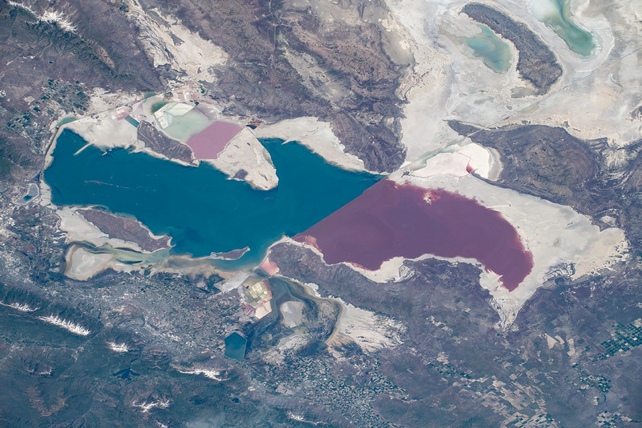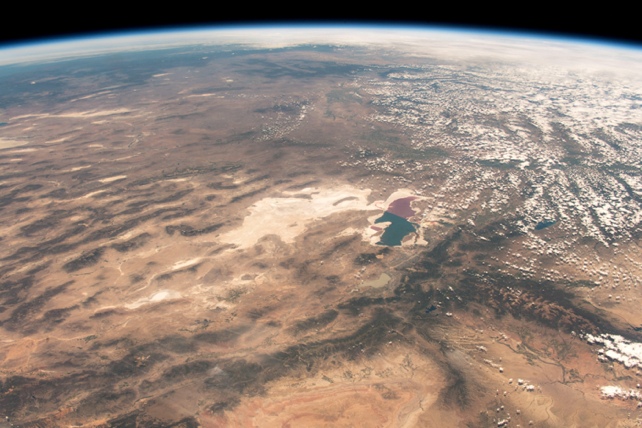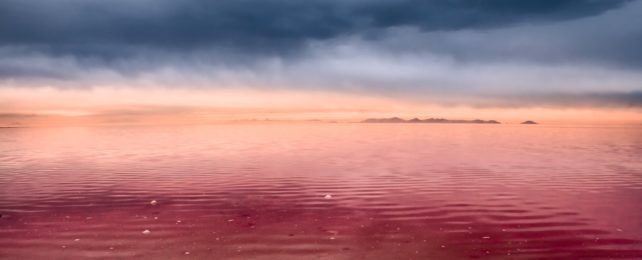If nothing is done to immediately conserve water in Utah, scientists in the United States say the Great Salt Lake as we know it will disappear in as little as five years.
At this point, to reverse the decline, enough water to cover more than 2.5 million acres of land (over 10,000 square kilometers) a foot deep needs to flow back into the lake each year.
To put that in perspective, a single acre-foot contains about 326,000 gallons (over 1.2 million liters) of water.
Today, only about 0.1 million acre-feet of water is returned to Utah's famous lake each year, and that is not even close to being enough.
Since 2020, the lake has lost over one million acre-feet of water annually.

To pull the ecosystem back from the brink, research led by scientists at Brigham Young University (BYU) finds water consumption in the region must be reduced by at least one-third, possibly by half.
"Despite encouraging growth in legislative action and public awareness, most Utahns do not realize the urgency of this crisis," the researchers write in a comprehensive briefing on the issue, led by BYU ecologist Benjamin Abbott.
"Examples from around the world show that saline lake loss triggers a long-term cycle of environmental, health, and economic suffering. Without a coordinated rescue, we can expect widespread air and water pollution, numerous Endangered Species Act listings, and declines in agriculture, industry, and overall quality of life."
The report calls on the governor of Salt Lake City to immediately instate a watershed-wide emergency rescue of the metropolis' namesake.
The Great Salt Lake not only harbors important flora and fauna, it also protects air quality, removes water pollution, and moderates local weather, like snowfall in nearby mountains.

Recent research, however, suggests the ecosystem is reaching a dangerous tipping point. As millions of liters of water are diverted from the lake annually, salinity levels have begun to increase. Concentrations of salt are now so high, flora and fauna are struggling to survive.
In some areas, like the lake's North Arm, the result has caused the body of water to turn pink, triggered by a mass die-off of photosynthetic microbes.
"The lake's North Arm is a warning of what the future could hold unless streamflow is restored. Cut off by a railroad causeway in 1959, the North Arm receives almost no surface runoff," the briefing explains.
"The lack of freshwater flow caused salinity to reach saturation, killing the microbialites and algae that form the base of the lake's food web. The disrupted lake circulation temporarily caused the highest methylmercury levels in the country."
As a lake bed dries out, it is at risk of releasing embedded arsenic, mercury, lead, copper, organic contaminants, and cyanotoxins into the air via dust particles. Dust released from the drying lake can also damage crops, degrade soils, and cause premature snowmelt.
In California, when a salt lake similar to that of Utah's dried up from human activity, local residents experienced asthma and cardiovascular issues at a much higher rate than before.
Unfortunately, there's not much the average water consumer in Utah can do to help. They can remove their sprinklers, avoid water-guzzling plants in their garden, and advocate for better environmental policies at a state and federal level. But the water they use in their house is almost always treated and reused.
Water diverted from the Great Salt Lake and its catchment area – which spans some 23 million acres – is mostly used for industrial agriculture. Three quarters of the consumptive water use from the lake's watershed currently goes into irrigating crops, with mineral extraction sucking up another 9 percent.
Reducing farmers' reliance on irrigation is the best and possibly only way to save the lake, but that will require systematic political and societal changes to Utah and surrounding states.
If coordinated action doesn't take place in the first half of this year, researchers warn there will be catastrophic consequences.
"Facing this crisis will require conservation measures unprecedented in living memory," the researchers write.
"Reversing the collapse of the Great Salt Lake system is perhaps the greatest challenge we have faced in the history of our state. However, history shows that our community is capable of just this kind of bold collective action.
"For example, our Indigenous and pioneer predecessors adapted to natural variability in weather and climate that would have extinguished most civilizations.
"More recently, when excessive withdrawals caused Utah Lake to go dry in 1934 and 1935, emergency changes to infrastructure and water policy were made, allowing the lake to refill."
Utahns can do this. It's not too late.
The full report can be accessed online at Brigham Young University's website.
